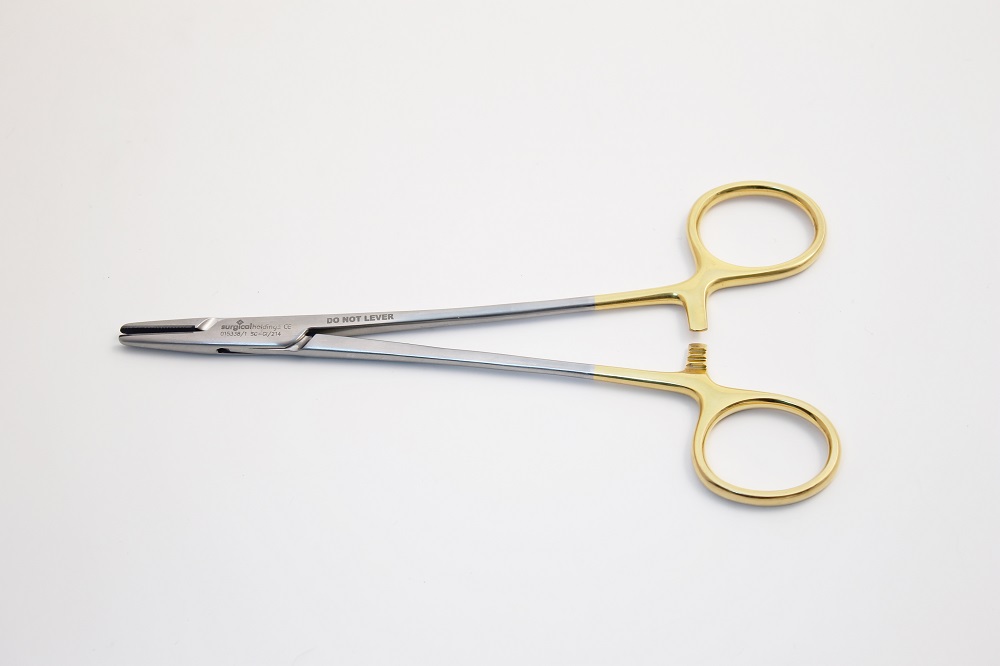in Instruments
How to Choose the Right Needle Holder

When it comes to precision, control, and safety in veterinary surgery, the needle holder is an unsung hero. Selecting the right one can make all the difference, reducing hand fatigue, increasing suture accuracy, and extending the life of your surgical instruments. Whether you’re a seasoned veterinary surgeon or a practice manager equipping a new clinic, understanding what to look for in a needle holder is essential.
In this guide, we’ll walk you through key considerations to help you choose the right needle holder for your needs, including size, jaw type, handle design, and material quality.
Size Matters
The first consideration in choosing a needle holder is size. Needle holders come in various lengths, typically ranging from 12cm to over 20cm. The right size depends on the type of surgery and the size of the animal being treated.
- Small animals or delicate procedures (e.g., ophthalmic or feline surgeries): Opt for shorter needle holders (12–15cm) for precision and better control.
- General surgeries or larger animals: A standard 16–18cm needle holder is often sufficient.
- Deep cavity procedures or large breed surgeries: Longer holders (20cm+) may be required to ensure reach and visibility.
Choosing the appropriate size helps improve handling and ensures you can apply consistent pressure without overexerting your hands.
Jaw Design
The jaw is where the needle is gripped, so it must offer both stability. There are several options to consider:
- Serrated jaws: These are standard and provide good grip on most suture needles. They are suitable for general surgical use.
- Tungsten carbide (TC) inserts: These are highly durable, corrosion-resistant, and offer superior grip without damaging the needle. Though more expensive, they are a worthwhile investment for high-volume clinics due to their long lifespan.
- Smooth jaws (rare): Occasionally used in micro-surgery or where delicate tissue handling is required, though not common in most vet procedures.
At Surgical Holdings Vet, our needle holders feature tungsten carbide jaws for extra longevity, ensuring minimal wear even after repeated use and autoclaving.
Handle Type
The design of the handle affects your grip, comfort, and control during suturing. The two most common types are:
- Ring-handled (scissor-style): The traditional design, familiar to most veterinary surgeons. These are ideal for procedures that require both precision and strength.
- Spring or palm-held: Commonly used in microsurgery or ophthalmic procedures. They are controlled using finger pressure, offering more nuanced movement for fine sutures.
For most general practice applications, ring-handled needle holders with ratchet locks are preferred due to their secure closure and reliable handling.
Ratchet Mechanism
Most needle holders feature a ratchet lock to hold the jaws closed around the needle, freeing up the surgeon’s hand while positioning sutures. A high-quality ratchet should:
- Engage smoothly without requiring excessive force.
- Lock firmly without slipping.
- Release easily when intended, even with gloved hands.
Poor-quality ratchets may loosen over time or become sticky, which can lead to accidental needle drops or hand fatigue. Look for a well-machined, robust locking system that won’t degrade with sterilisation cycles.
Material & Quality
Veterinary instruments should be crafted from high-grade stainless steel, ideally with a satin or matte finish to reduce glare under surgical lights. High-quality instruments:
- Resist corrosion and pitting.
- Withstand repeated autoclaving.
- Maintain sharpness and grip over time.
At Surgical Holdings Veterinary, our needle holders are manufactured in the UK using medical-grade stainless steel and feature tungsten carbide inserts for added durability. Every instrument is hand-finished to ensure precision and reliability in clinical use.
Common Types of Needle Holders
Here’s a brief rundown of some popular needle holders and their common veterinary uses:
- Mayo-Hegar Needle Holders: Versatile and robust, suitable for general surgeries across species. Available with or without tungsten carbide jaws.
- Olsen-Hegar Needle Holders: Feature built-in scissors, enabling the surgeon to cut sutures without switching instruments, ideal for efficiency in fast-paced environments.
- Crile-Wood Needle Holders: Offer a finer, more delicate grip, ideal for soft tissue or vascular surgery in smaller animals.
- Castroviejo Needle Holders: Spring-action design used for microsurgery and ophthalmic procedures. These allow delicate handling of small sutures and tissue.
Budget vs. Value
While cost is a valid concern, especially for practices managing tight budgets, it’s worth noting that high-quality needle holders often prove more economical in the long run. Cheaper instruments may lose their grip quickly, bend out of shape, or rust prematurely, requiring frequent replacement.
Reusable, well-maintained instruments with tungsten carbide inserts can withstand hundreds of cycles of use and sterilisation, offering better long-term value and surgical consistency.
Choose With Confidence
Selecting the right needle holder isn’t just a matter of preference, it directly affects surgical outcomes, instrument longevity, and surgeon comfort. Take time to assess your clinic’s most common procedures, and choose tools that meet the needs of both your team and your patients.
At Surgical Holdings Veterinary, we stock a wide range of precision-engineered veterinary instruments, including industry-trusted needle holders made right here in the UK. If you’re unsure which model is best for your needs, our experienced team is always happy to help.
